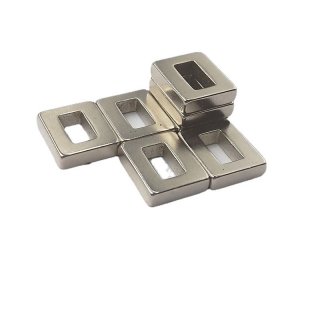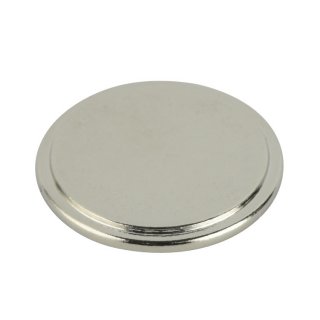1.Grade: N35, N38, N40, N42, N48, N50, N52 (M, H, SH, EH, UH,AH) The Grade of a magnet generally indicates how “strong” a magnet material is, which is measured by the Maximum Energy Product. The energy product is commonly specified in units of Gauss Oersted. The higher the grade the “stronger” the magnet.
2.Shape: Disc, Ring, Block, Segment, Cylinder, Trapezoid, Customized Design (Design proper magnets for clients specific requirements)
3.Coating:Ni, Ni-Cu-Ni, Black Nickel, Zn, Epoxy, Ni-Ag, Ni-Au, etc. As Neodymium magnet is prone to corrosion, it is usually preferable to be coated for protection. Among a variety of options for coatings, nickel and nickel-copper-nickel are the most commonly used, making the magnet more corrosion resistant and durable.
4.Applications: Motors, Generator Permanent Magnet, NdFeB Pot Magnet, Speakers, Sensors, Earphones and other musical instruments, Magnetic therapy devices, Magnetic Chuck, Magnetic bearings and couplings, Other magnetic applications
5.Size: customized size per your requirements, largest block length of 150mm, biggest ring of D220mm, smallest thickness of 0.5mm
6. Directions of Magnetization:
a. Thickness Magnetized
b. Axially Magnetized
c. Radial Magnetized
d. Multi-poles magnetized
e. Customzied specific requirements magnetized
Neodymium Permanent Magnet (also known as NdFeB, NIB or Neo magnet ), the most widely used type of rare-earth magnet, is a permanent magnet made from an alloy of neodymium, iron and boron to form the Nd2Fe14B tetragonal crystalline structure.Multiple choices of shapes can meet specific customer requirements.
Features
Well known as "The Lord of Magnet", the tetragonal Nd2Fe14B crystal structure has exceptionally high uniaxial magnetocrystalline anisotropy (HA ~7 T – magnetic field strength H in units of A/m versus magnetic moment in A·m2). This means a crystal of the material preferentially magnetizes along a specific crystal axis, but is very difficult to magnetize in other directions. The resistance of the crystal lattice to turning its direction of magnetization gives the compound a very high coercivity, or resistance to being demagnetized.
The Nd2Fe14B compound a high saturation magnetization (Js ~1.6 T or 16 kG) and typically 1.3 teslas. Therefore, as the maximum energy density is proportional to Js2, this magnetic phase has the potential for storing large amounts of magnetic energy (BHmax ~ 512 kJ/m3 or 64 MG·Oe). This magnetic energy value is about 18 times greater than "ordinary" magnets by volume. This property is higher in NdFeB alloys than in samarium cobalt (SmCo) magnets, which were the first type of rare-earth magnet to be commercialized. In practice, the magnetic properties of neodymium magnets depend on the alloy composition, microstructure, and manufacturing technique employed.
Neodymium Permanent Magnet are graded according to their maximum energy product, which relates to the magnetic flux output per unit volume. Higher values indicate stronger magnets and range from N35 up to N52. and M, H, SH, UH, EH, AH series,can be customized into a wide range of shapes and sizes with precise tolerances. Multiple choices of coatings and magnetization orientations can meet specific customer requirements. Letters following the grade indicate maximum operating temperatures (often the Curie temperature), which range from M (up to 100 °C) to EH (200 °C) to AH (230 °C)
Neodymium( NdFeB )magnets are the strongest type of rare earth magnet commercially available and are manufactured in wide range of shapes, sizes and grades.
Fuzhou AOMAG Magnetics Co., Ltd. can supply professional design and consluting services. Meanwhile, our company also can produce various of generator permanent magnetand supply select material and application of technical services according customers' drawing.
If you have any question,please do not hesitate to contact me.
















